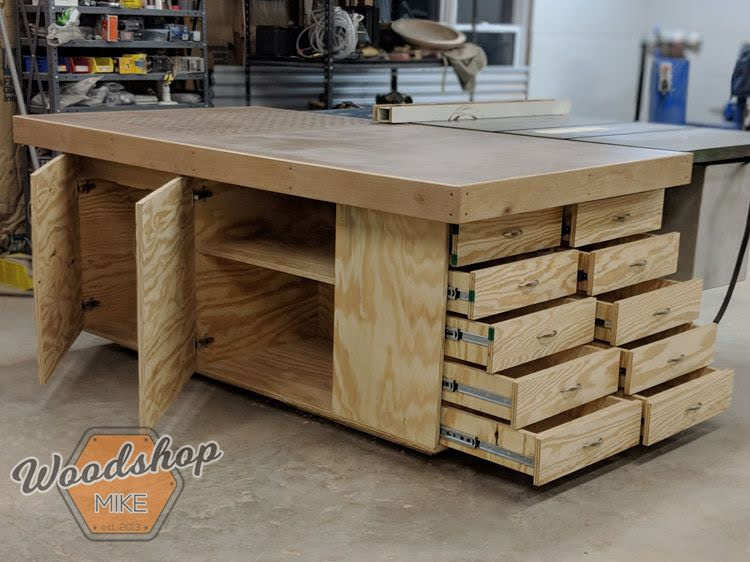Woodworking requires precise measurements to ensure the consistent and accurate creation of furniture, structures, or decorative pieces. When it comes to angled cuts, measuring can present unique challenges that need to be accounted for in order to achieve the desired outcome. This article will provide a comprehensive guide on how to measure angled cuts in woodworking, covering everything from understanding the basics of angles to using specific tools and techniques for precise measurements.
Accurate measurements are crucial in woodworking as they directly impact the fit, alignment, and overall quality of the final product. When it comes to angled cuts, achieving precision becomes even more important due to the added complexity involved. Angled cuts can be found in a variety of woodworking projects such as mitered corners, beveled edges, or compound angles. Ensuring that these cuts are measured correctly is essential for achieving seamless joints, optimal aesthetics, and structural integrity.
Measuring angled cuts presents a challenge because traditional measuring tools like tape measures or straightedges may not suffice when it comes to determining and replicating exact angles. It requires specialized tools and techniques designed specifically for measuring angles accurately. This article will delve into the different types of angles commonly used in woodworking and explore various methods for measuring angles with precision and efficiency.
By understanding the importance of accurate measurements in woodworking as well as the unique challenges posed by angled cuts, you will gain valuable insights into how to approach your projects with confidence. So let’s dive deeper into the world of measuring angled cuts in woodworking and discover the essential tools and techniques that will help you achieve professional-level results every time.
Understanding the Basics
Woodworking involves creating various cuts and joints, and accurate measurements are crucial for achieving precise results. One of the challenges in woodworking is measuring angled cuts, which requires an understanding of the concept and types of angles commonly used. This section will provide an overview of angled cuts in woodworking and introduce the different types of angles.
In woodworking, angled cuts are made when pieces of wood need to be joined at a specific angle. These cuts can be seen in a variety of projects such as furniture, cabinets, and picture frames. Angled cuts add visual interest to the design and create strong joints that enhance the overall integrity of the piece.
There are several types of angles commonly used in woodworking. The most well-known angle is the miter angle, which is formed when two pieces of wood are joined at a corner with equal angles on each side. Miter angles are typically cut at 45 degrees or 90 degrees, although other angles may be used depending on the project.
Another type of angle is the bevel angle, which refers to a slanted or sloping edge on a piece of wood. Bevel angles can be created by making diagonal cuts across the width or length of the wood. These angles are commonly used for decorative purposes or when two pieces of wood need to fit together seamlessly.
Understanding these basic concepts and types of angles is crucial for measuring angled cuts accurately in woodworking. By familiarizing yourself with these terms and their applications, you’ll be better equipped to choose the right tool for measuring and confidently tackle angled cuts in your woodworking projects.
Essential Tools for Measuring Angled Cuts
To accurately measure angled cuts in woodworking, it is essential to have the right tools at your disposal. There are several tools specifically designed for measuring angles, including protractors, bevel gauges, and angle finders. Each tool has its own unique features and advantages, so choosing the right one depends on the specific needs of your project.
Protractors
One of the most common tools used for measuring angles in woodworking is a protractor. Protractors typically come in two types: half-circle or full-circle. The half-circle protractor is ideal for measuring angles up to 180 degrees, while the full-circle protractor can measure angles up to 360 degrees.
To use a protractor, follow these steps:
- Determine the desired angle you want to measure.
- Place the center point of the protractor on the vertex of the angle.
- Align one of the arms of the angle with the baseline of the protractor.
- Read the measurement value where the other arm intersects with the curved scale.
Bevel Gauges
Bevel gauges are another useful tool for measuring and transferring angles accurately. They consist of a handle and a blade with an adjustable angle marker. Bevel gauges are often preferred when precision is crucial because they allow you to lock in an exact angle.
To measure angles using a bevel gauge, follow these steps:
- Set the bevel gauge to match your desired angle by adjusting its blade.
- Hold down one side of the blade against one face of your workpiece.
- Tighten or lock down any adjustment mechanism on your bevel gauge to secure its position.
- Transfer this measured angle directly onto your workpiece by marking it with a pencil or a scribe.
Angle Finders
Angle finders are advanced measuring tools that provide more precise measurements, especially for irregular or complex angles. They come in both digital and analog formats. Digital angle finders often have built-in LCD screens to display the exact angle measurement, while analog ones employ a mechanical pointer or dial.
To use an angle finder:
- Place the angle finder against the angled surface of your workpiece.
- Read the measurement value displayed on the screen (for digital) or align the pointer with a scale on the body (for analog).
- Consider using an additional level bubble to ensure accurate results.
By familiarizing yourself with these essential tools and their proper usage, you can confidently measure angled cuts in woodworking projects. Remember to choose the tool that best suits your needs and always practice caution and accuracy when working with angles.
Preparing the Workpiece
Before tackling angled cuts in woodworking, it is crucial to properly prepare the workpiece. This preparation ensures accurate measurements and clean cuts that will result in a successful project. Two key aspects to consider when preparing the wood are ensuring it is square and smooth.
Firstly, squaring the wood is essential for accurate measurements and precise angles. Square refers to having two perpendicular sides or edges at 90-degree angles to each other. To check if your workpiece is square, you can use a try square or a combination square.
Simply place the square firmly against one edge of the wood and then slide it along the adjacent edge. If there are any gaps between either side of the square and the wood, adjustments need to be made until both edges are perfectly aligned with the square.
Once you have confirmed that your wood piece is square, it’s important to make sure that it is smooth as well. Smooth surfaces will allow for more precise measurements, especially when using tools like protractors or angle finders. Start by sanding down any rough areas or imperfections on both faces and edges of the wood. This not only improves accuracy but also helps prevent tear-out during cutting.
To further enhance precision in measuring angled cuts, professionals often recommend using reference lines on the workpiece. These lines serve as guides for aligning tools such as protractors or bevel gauges accurately. Using a straightedge ruler or a marking gauge, carefully draw reference lines across the faces or along the edges of your workpiece where you intend to make your cuts. Ensure these lines are clear and well-defined so they can be easily referenced during measurement.
Measuring Angles with a Protractor
Measuring angles accurately is crucial in woodworking to ensure precise cuts and professional-looking finished products. One of the most commonly used tools for measuring angles is a protractor. This section will provide step-by-step instructions on how to use a protractor effectively.
- Determine the Desired Angle: Before measuring the angle, it is important to know the specific angle you want to achieve in your woodworking project. This can be determined through design plans or by visualizing the desired outcome.
- Prepare the Workpiece: As mentioned earlier, preparing the workpiece is essential for accurate measurements. Ensure that the wood is square and smooth before proceeding with measuring angles.
- Aligning the Protractor: Place the center point of the protractor’s base directly on one end of the line or edge where you want to measure the angle. Make sure that both arms of the protractor extend across your desired angle.
- Read and Record Measurement: Once you have properly aligned the protractor, read and record the measurement where your desired angle intersects with either arm of the protractor. Most traditional protractors have markings every 5 degrees, so make sure to estimate as accurately as possible between those markings.
- Double-Check Measurements: It’s always a good idea to double-check your measurements for accuracy. Realign the protractor if necessary, ensuring that it is securely placed against your workpiece, and take another measurement to confirm consistency.
| Step | Description |
|---|---|
| Step 1 | Determine Desired Angle |
| Step 2 | Prepare the Workpiece |
| Step 3 | Aligning the Protractor |
| Step 4 | Read and Record Measurement |
| Step 5 | Double-Check Measurements |
Remember to handle the wood and protractor with care while measuring angles. Any inaccuracies or movements can result in imprecise measurements, leading to improperly cut angles. Practice using a protractor on scrap wood before applying it to your actual project to ensure accuracy.
Measuring Angles with a Bevel Gauge
A bevel gauge is a valuable tool for accurately and efficiently measuring angles in woodworking. This section will provide a detailed guide on how to use a bevel gauge effectively, including marking the angle on the gauge and transferring it to the workpiece.
Step 1: Set the Bevel Gauge
The first step in measuring angles with a bevel gauge is setting the gauge to the desired angle. To do this, loosen the locking mechanism on the bevel gauge and adjust the blade or stock to match the angle you want to measure. Once you have set the bevel gauge to the desired angle, tighten the locking mechanism to secure it in place.
Step 2: Marking the Angle on the Gauge
Once you have set your bevel gauge to the desired angle, it is important to mark that angle on the gauge for future reference. This can be done by using a pencil or scribe to make a small mark on either side of the blade or stock at its base. These marks serve as a visual reminder of the angle you are working with and can help prevent mistakes when transferring measurements later.
Step 3: Transferring Measurements
To transfer measurements from your bevel gauge to your workpiece, place one end of your bevel gauge against one edge of your workpiece and adjust it until it matches your desired angle. Once you have aligned the bevel gauge correctly, use a pencil or scribe to mark along either side of the blade or stock onto your workpiece. These marked lines will indicate where you need to cut or shape your wood in order to achieve your desired angled cut.
Remember that accuracy is key when using a bevel gauge, so take care while aligning it with your workpiece and double-check measurements before making any cuts or modifications. With practice and attention to detail, measuring angles with a bevel gauge can become second nature, leading to precise and successful woodworking projects.
Measuring Angles with an Angle Finder
Angle finders are an essential tool in woodworking for measuring angled cuts with precision and accuracy. They are particularly useful when working with complex angles or non-standard angles that cannot be easily measured using a protractor or bevel gauge. Angle finders come in two main types: digital and analog, each with its own advantages and applications.
Digital Angle Finders
Digital angle finders utilize electronic technology to provide highly accurate angle measurements. These tools typically feature an LCD screen that displays the measured angle in degrees, allowing for quick and easy readings. Digital angle finders often have additional features such as hold function, which allows you to lock the measurement so it can be easily transferred to your workpiece.
To use a digital angle finder, simply place it against the surface being measured and read the displayed angle on the screen. Some digital models also allow for zeroing or calibration, ensuring maximum accuracy. These tools are especially helpful when working on projects that require tight tolerances or when making repeatable cuts.
Analog Angle Finders
Analog angle finders, also known as protractors, are traditional manual tools used for measuring angles. They consist of a rotating arm with degree markings and a locking mechanism to hold the desired angle in place. Analog angle finders offer a tactile experience that some woodworkers prefer and are generally more affordable than their digital counterparts.
To use an analog angle finder, align one side of the arm along one edge of the angled cut you wish to measure. Rotate the arm until it rests against the other edge of the cut, then secure it in place using the locking mechanism. The degree markings on the arm will indicate the measured angle.
Both digital and analog angle finders have their own benefits depending on personal preference and project requirements. Digital options provide more precise measurements and convenience, while analog options offer simplicity and affordability.
When measuring angles with an angle finder, it’s important to ensure that the tool is clean and free from any debris or damage that could affect its accuracy. Additionally, always be careful when handling and storing angle finders to prevent any potential damage that may compromise their functionality.
By utilizing angle finders appropriately, woodworkers can achieve precise and accurate measurements for angled cuts, resulting in high-quality craftsmanship in their woodworking projects.
Tips and Tricks for Accurate Measurements
Accurate measurements are crucial in woodworking, especially when it comes to measuring angled cuts. Even the slightest deviation can negatively impact the quality and fit of your woodworking projects. To ensure precise measurements, there are several tips and tricks that experts recommend.
One of the most important techniques for accuracy is using reference lines. Before measuring an angled cut, create reference lines on your workpiece to guide you. These lines can help you align your measuring tools properly and ensure consistency throughout the project. Use a straight edge or a square to draw these reference lines, making sure they are perpendicular to the edges of your workpiece.
Double-checking measurements is another key strategy for accurate results. After measuring an angle, take a moment to verify your measurement by rechecking it with a different tool. This can help eliminate any potential errors or inconsistencies that may have occurred during the initial measurement. By double-checking, you can catch any mistakes early on and make adjustments as needed.
Using clamps or jigs for stability is essential when working with angled cuts. Holding the workpiece securely in place ensures that it doesn’t shift while you measure or make your cuts, preventing inaccuracies caused by movement. Clamp your workpiece firmly onto a stable surface or use specialized jigs designed specifically for angled cuts to provide stability and support.
Additionally, it’s important to pay attention to small details that can affect measurement accuracy. Make sure your measuring tools are clean and free from debris that could interfere with their functionality. Keep blades sharp and replace them when necessary to avoid imprecise cuts due to dullness.
Common Mistakes and Troubleshooting
When it comes to measuring angled cuts in woodworking, beginners often make some common mistakes that can lead to inaccurate measurements. However, with a little guidance and troubleshooting know-how, these mistakes can be easily avoided or corrected. In this section, we will address some of the most common mistakes made by beginners when measuring angled cuts and provide helpful solutions.
One of the most common mistakes beginners make is not properly aligning their tools when measuring angles. This can result in incorrect measurements and ultimately affect the overall accuracy of the project. To avoid this mistake, it is important to ensure that your protractor, bevel gauge, or angle finder is positioned correctly against the workpiece. Take your time to align the tool accurately before taking any measurements. Additionally, double-checking your alignment before making any cuts will help prevent inaccuracies.
Another mistake beginners often make when measuring angled cuts is not using reference lines to guide their measurements. Reference lines serve as a visual guide that helps ensure accurate measurements by giving you a clear starting point. By marking reference lines on your workpiece, you can easily align your measurement tools and measure angles more precisely. These reference lines also come in handy for double-checking your measurements before cutting.
Inaccurate measurements can also occur due to unstable workpieces. Beginners may forget to secure their wood piece using clamps or jigs while taking measurements, resulting in unexpected movement or shifting during the process. To avoid this mistake, always remember to secure your workpiece firmly before measuring any angles. Using clamps or jigs will provide stability and prevent any unwanted movement.
By being aware of these common mistakes and having troubleshooting solutions at hand, beginners can overcome measurement challenges when working with angled cuts in woodworking. Taking the time to align tools correctly, using reference lines for guidance, and ensuring workpiece stability are essential steps for accurate measurements. With practice and attention to detail, precision in measuring angled cuts can be achieved, leading to successful woodworking projects.
Conclusion
In conclusion, accurately measuring angled cuts in woodworking is crucial for achieving successful and professional-looking projects. Throughout this article, we have discussed the basics of angled cuts and introduced a range of essential tools for measuring angles, including protractors, bevel gauges, and angle finders.
We learned that proper preparation of the workpiece is essential before taking measurements, ensuring that the wood is square and smooth to obtain accurate results. Furthermore, we provided detailed instructions on how to measure angles using different tools such as protractors, bevel gauges, and angle finders.
To ensure precise measurements for angled cuts, we shared some expert tips and tricks, including using reference lines, double-checking measurements, and utilizing clamps or jigs for stability. Additionally, we addressed common mistakes beginners often make when measuring angled cuts and provided troubleshooting solutions to help rectify inaccuracies.
Frequently Asked Questions
How do you measure angle cuts on wood?
To measure angle cuts on wood, you can use a variety of tools such as a protractor or an adjustable bevel gauge. First, determine the desired angle for the cut and set your measuring tool accordingly. Place the tool against the wood at the point where you want to make the cut and align it with the reference line or edge.
Carefully read the measurement on the tool’s scale to determine the angle. Alternatively, you can also use a combination square by aligning one leg along the reference line and adjusting the other leg to match the desired angle.
How do you find the angle of a miter cut?
Finding the angle of a miter cut involves some basic calculations or using specialized tools like a miter gauge or a digital protractor. If you know what degree of miter cut you need, simply set your measuring tool or saw accordingly and make sure it aligns with your reference point or line.
However, if you have an existing piece and need to determine its miter angle, a digital protractor can come in handy. Place it against one side of the piece and adjust it until it accurately measures the angle between that side and your reference line.
How do you measure bevel angle?
Measuring bevel angles requires specific tools like a bevel gauge or a sliding bevel square. These tools are adjustable so that they can mimic different angles when placed against a surface or edge. To measure a bevel angle, place your tool against either surface that needs to be angled (such as when creating compound joints).
Adjust its blade or arm until it is parallel with that surface while referencing any required instructions or measurements for accuracy. Then carefully read off your tool’s scale to determine the measured bevel angle in degrees.

Hi everyone! I’m a woodworker and blogger, and this is my woodworking blog. In my blog, I share tips and tricks for woodworkers of all skill levels, as well as project ideas that you can try yourself.





